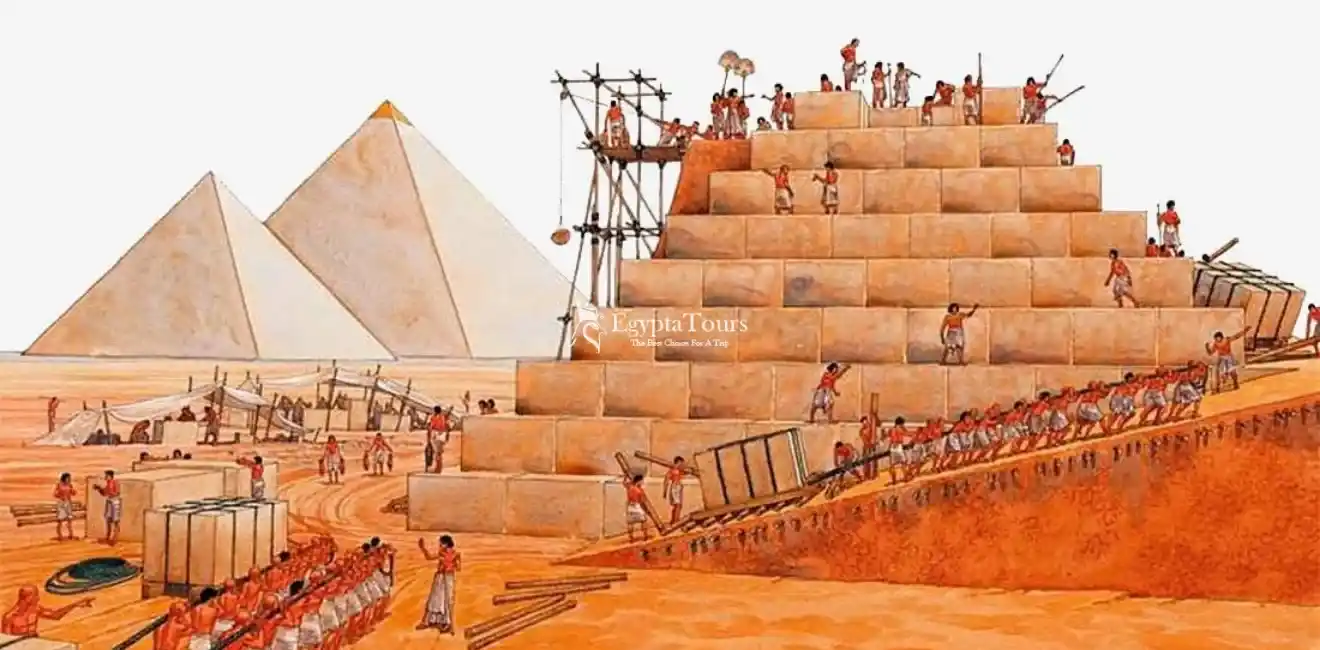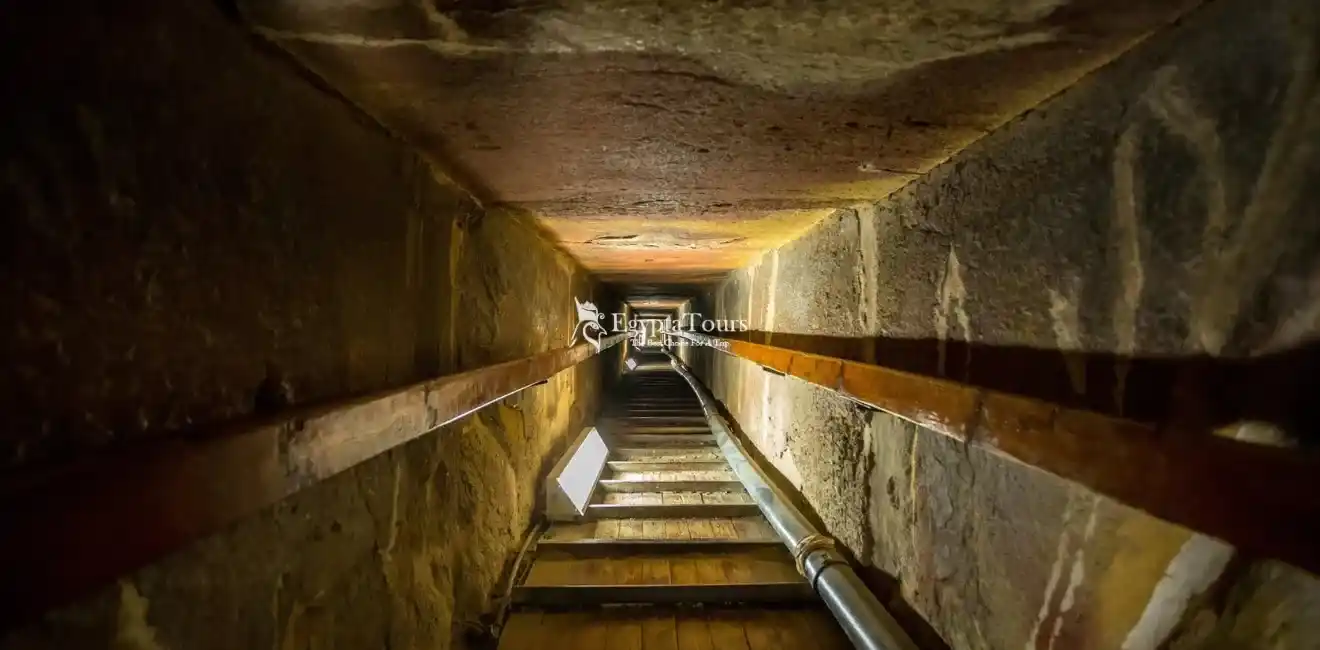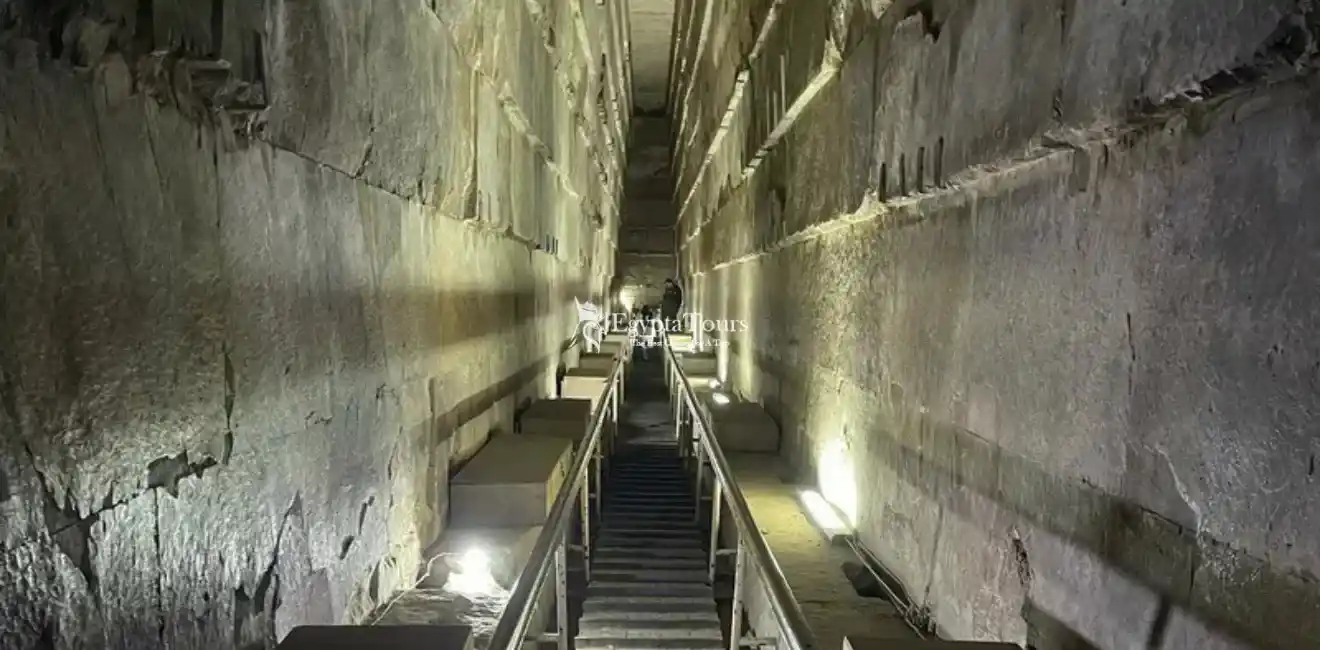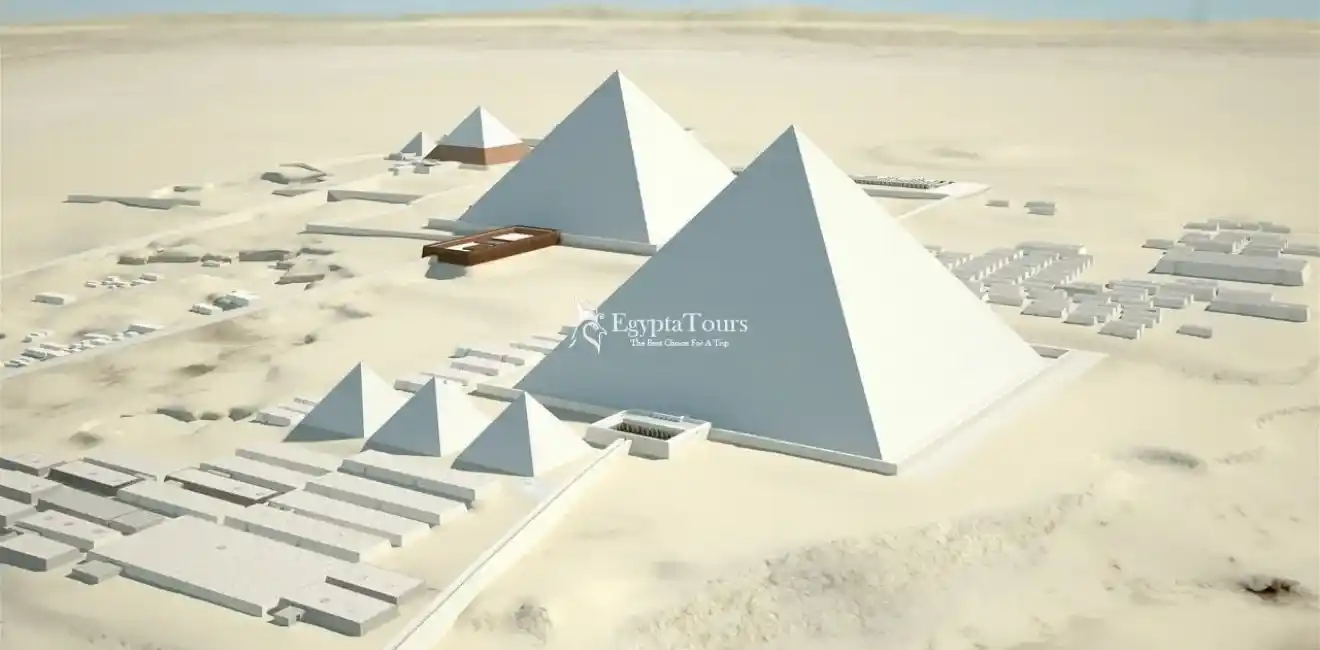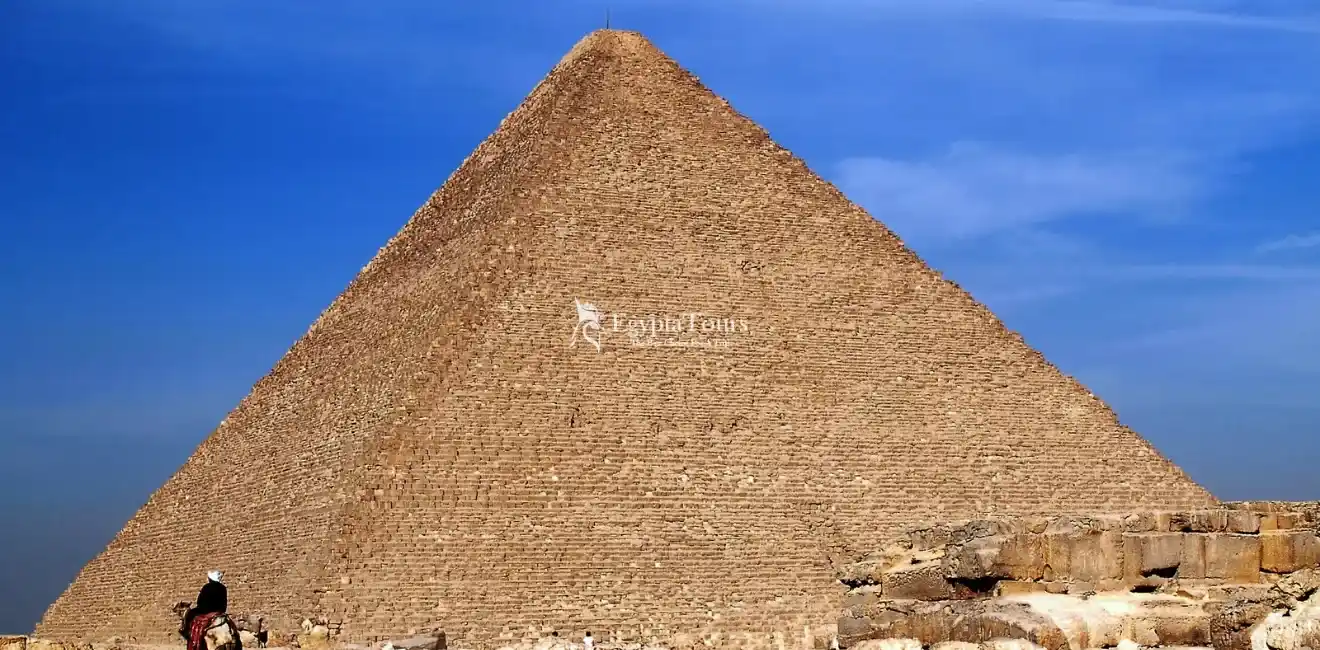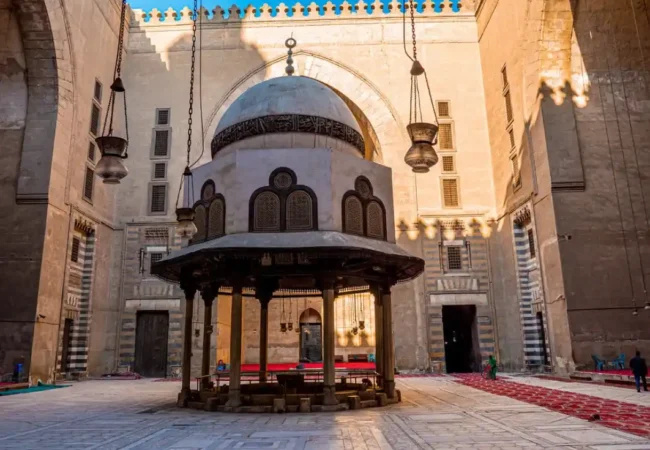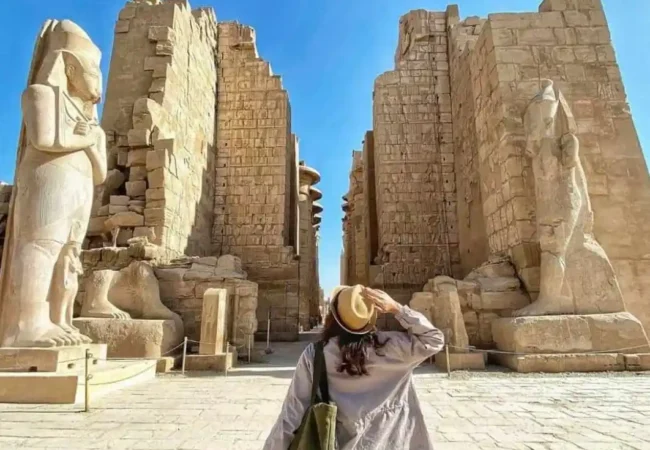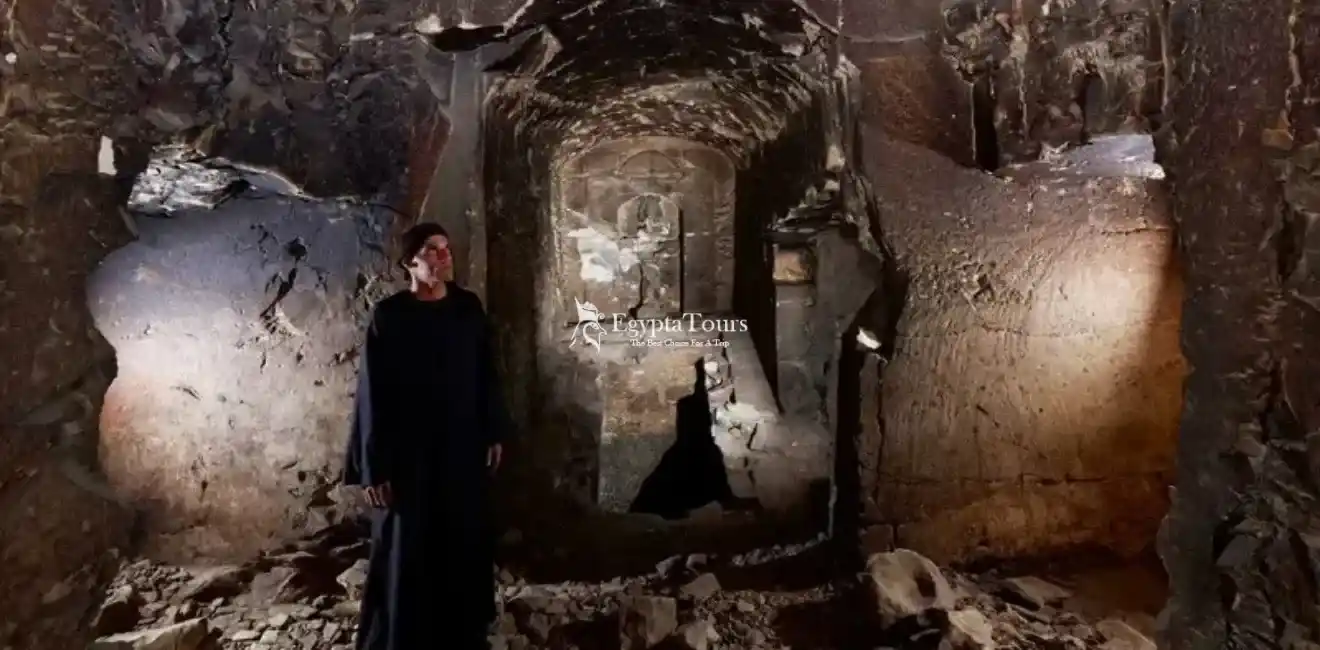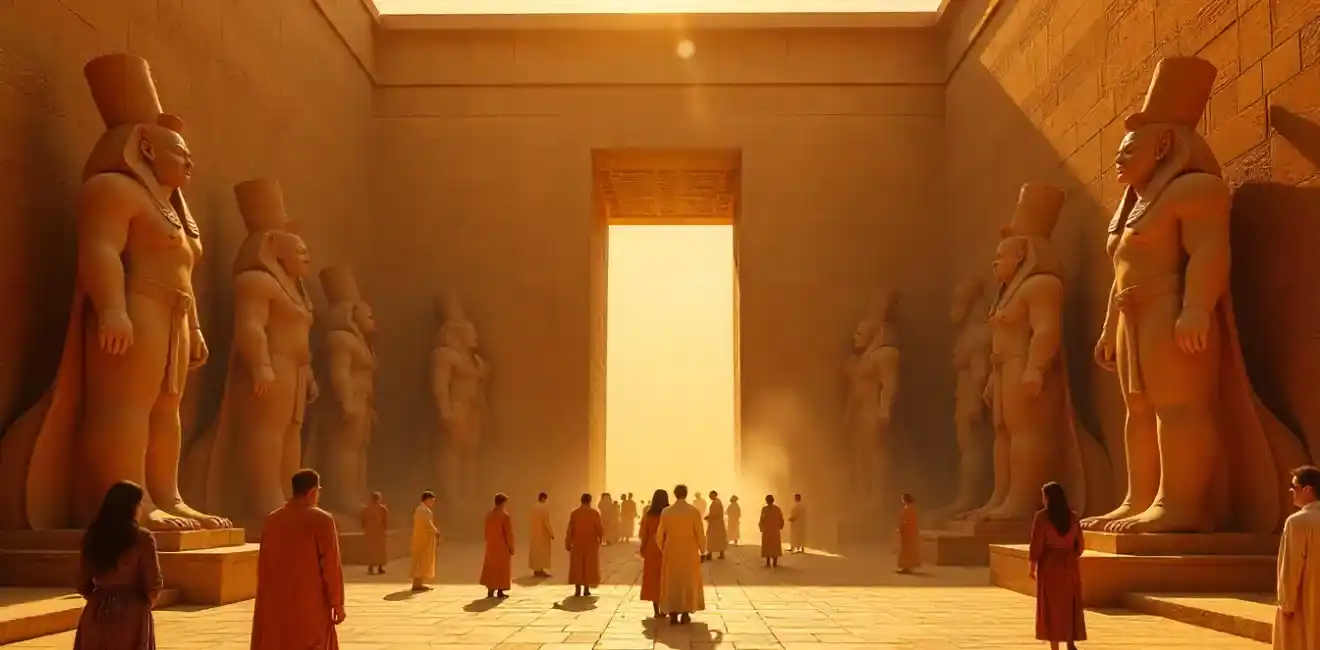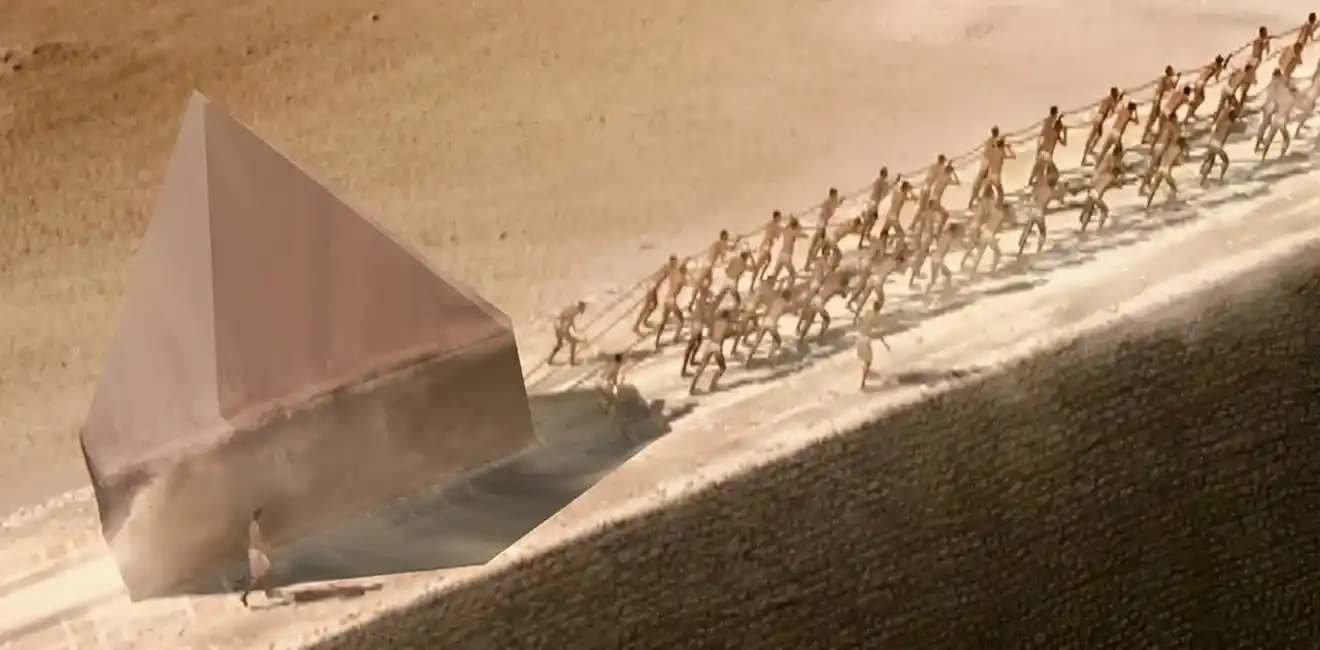
Facts About Building The Great Pyramid of Giza
Since the pyramids were discovered, they have become a focus of interest for many researchers and historians. They are ancient Egyptian monuments that tourists from all over the world come to see, especially since the Great Pyramid of Khufu is one of the Seven Wonders of the World. Through this article, we will discuss several facts about building the great pyramid of Giza.
The pharaohs built the pyramids during the Old Kingdom era. King Khufu ordered the construction of the first and largest pyramid, named after him, in the period between 2580 and 2560 BC. One of the most prominent facts about building the Great Pyramid of Giza is that the construction period took about 20 years, using stones weighing between 2.5 and 15 tons each.
Despite the simple construction tools available, the construction was done with great skill and precision. From inscriptions discovered in quarries and at a port, it became clear that the workers transported the stones via waterways, boats, and earthen ramps to reach the construction site. There was meticulous engineering and administrative planning and organization.
How were the Giza Pyramids built?
Millions of stone blocks were used to build the pyramids, especially the Pyramid of Khufu, and many of their own techniques were followed due to the lack of advanced machinery and materials.
The construction was as follows:
- Stones were cut, whether obtained from Tura or Giza, and granite was prepared for use in the inner chambers, which came from Aswan.
- The stones were transported using wooden sleds and also boats when transported via the Nile River. This is a key fact about building the Great Pyramid of Giza.
- Earthen or stone ramps were built to help them raise the stones upwards. These ramps were likely built around the pyramid and extended with each new level.
- The movement of workers was well organized. They were highly skilled workers living in a residential city near the site. They received food and healthcare and were not slaves as was once commonly believed.
- The pyramids were designed with artistic and engineering creativity, with organized planning and measurement that shows the intelligence of the pharaohs.
It is worth mentioning that scientists have been unable to explain some facts, such as how the pyramid is symmetrical on all four sides. They also found that the sun is perpendicular to the pyramid’s apex, which helps sunlight to pass and illuminate the king’s burial chamber. Also, the pyramids are built in perfect alignment.
What is inside the pyramids?
Many things were found inside the three pyramids.
Here is what was found in each:
Pyramid of Khufu
It contains several chambers, including the chamber where the king was buried, as well as chambers for family, servants, and entourage, in addition to many passages that make it difficult for thieves to enter and rob. There are also some secret chambers where the deceased’s jewelry and belongings were kept.
Pyramid of King Khafre
It is the second pyramid and contains many passages leading to the king’s burial chamber, which was carved into the rock, in addition to many other chambers designated for the burial of the king’s servants, entourage, and family, with all their possessions preserved in the belief that they would be used in the afterlife.
Pyramid of King Menkaure
It is the smallest of the three pyramids and also contains several chambers and passages that all lead to the king’s burial chamber. It is important to note that above the king’s chamber, there are five relieving chambers to protect the chamber’s ceiling from collapsing.
What do Excavations reveal about the builders in ancient Egypt?
Excavations have revealed many misconceptions that were common among everyone. The workers were highly skilled and professional, not slaves as mentioned.
They also received complete nutritional meals and lived in a workers’ city.
Excavations also indicated precise engineering organization and integrated management, all of which contributed to the project’s continuity and its construction with such strength and skill.
The workers also worked diligently to maintain the stability of Egypt, as they believed that the king’s tomb would help secure his eternal life and thus achieve stability.
The Giza Plateau and its Architectural Monuments
There is no doubt that the Giza Plateau still has great architectural significance and importance to this day. Besides its engineering and architectural excellence, it is also a global tourist destination that attracts visitors from all over the world, especially as it is the basis for understanding architectural thought in ancient Egypt and its religious creed.
To this day, research is still being written about it, trying to uncover the most prominent facts about building the Great Pyramid of Giza, as the internal voids in the pyramid hold many undiscovered secrets that are currently being investigated.
Modern Discoveries about Construction Methods
Discoveries about the methods of building the pyramids are still ongoing. A ramp for transporting rocks was found, which is considered one of the facts about building the Great Pyramid of Giza, dating back approximately 4,500 years.
This discovery could change the theories about how the workers constructed this monument, transporting the huge stone blocks to heights. It is also an indication of the invention of a pulley system hundreds of years ago.
The Difference Between the Giza Pyramids and Other Pyramids
There is a big and clear difference between the pyramids in Giza and other pyramids.
To clarify, the following can be mentioned:
Giza Pyramids
- They consist of Khufu, Khafre, and Menkaure, and smaller pyramids for the queens. Several facts have been discovered about building the Great Pyramid of Giza, which consists of millions of stone blocks.
- They were built of granite and limestone, the strongest building materials at that time, in addition to engineering organization and architectural art, with their massive size and construction strength.
- They are characterized by architectural precision, as we find that the four directions are precisely aligned. Inside the pyramids, there are many chambers and passages.
- The Great Sphinx is located next to the pyramids and is considered one of the unique and great monuments.
Other Pyramids
- They consist of the Step Pyramid, the Red Pyramid, the Bent Pyramid, and the pyramids of the Fifth and Sixth Dynasty kings.
- None of them reached the same size as the Giza pyramids; their sizes are smaller.
- The quality of construction and the materials used were not as strong and durable as the Giza pyramids; they are of lower quality.
- Their construction had some clear religious objectives, and despite their historical importance, they are less famous than the Giza pyramids.
Why is the Great Pyramid one of the Seven Wonders of the World?
The Great Pyramid is considered one of the Seven Wonders of the World due to its many secrets that have made it one of the most important monuments in the world.
Here are the most important facts about building the Great Pyramid of Giza:
- The weight of a single stone used in its construction ranges from 2.5 to 15 tons.
- The number of stones used in its construction is approximately 2.3 million.
- The height of the pyramid reaches 146.7 meters (originally), which is equivalent to a skyscraper of about 48 stories.
- The weight of the stone in the ceiling of the king’s chamber is 70 tons, a matter that scientists have not yet explained.
- The entrance passage of the pyramid points to the North Star.
- If any food is left in the king’s chamber, it does not rot.
- Regarding the astronomical system, this pyramid is located directly under the largest star in the sky.
- The pyramid was coated in white limestone, so at night it reflected light.
- When the pyramid’s perimeter is divided by its height, and when the perimeter of the king’s chamber is divided by its height, and also when the perimeter of the sarcophagus is divided by its height, they all give the same result: 3.14 (Pi).
Conclusion
The facts about building the Great Pyramid of Giza are numerous. It is one of the Seven Wonders of the World, whether in its construction, its contents, or its location. It continues to amaze scientists, with some facts still unexplained. This indicates the superiority of the ancient Egyptians in architecture, enabling them to impress the world to this day.
FAQs
What are 5 interesting facts about the Great Pyramid of Giza?
Facts about building the great pyramid of Giza include that it is one of the Seven Wonders of the World, it is the largest pyramid, built from about 2.3 million stones, its height reaches 146.7 meters, and finally, if food is left in it for a certain time, it does not spoil.
What are some facts about the building of the pyramids in Egypt?
The construction of the pyramids took many years and involved thousands of Egyptian workers using the best technologies of that time, such as pulleys, ropes, and more.
How long did it take to build the pyramid of Giza?
The construction of the pyramids took approximately 20 years by many workers who were not slaves as was spread, but were the most skilled people.
What is the secret behind the pyramid of Giza?
The secret behind this great construction is good, precise, and organized planning, using the best building materials such as stones and granite, and also employing the best transportation methods like boats, waterways, ramps, and more.
How many slaves built the pyramids?
Those who built the pyramids were not slaves but skilled Egyptian laborers who worked for wages and had housing, medical and health care, and nutritional meals. They also worked during the flood season when the lands were not suitable for agriculture.
What was found under the pyramids in Egypt?
Tombs were found, including the tombs of the workers who built the pyramids. Many jewels, statues, and artifacts were also found.







